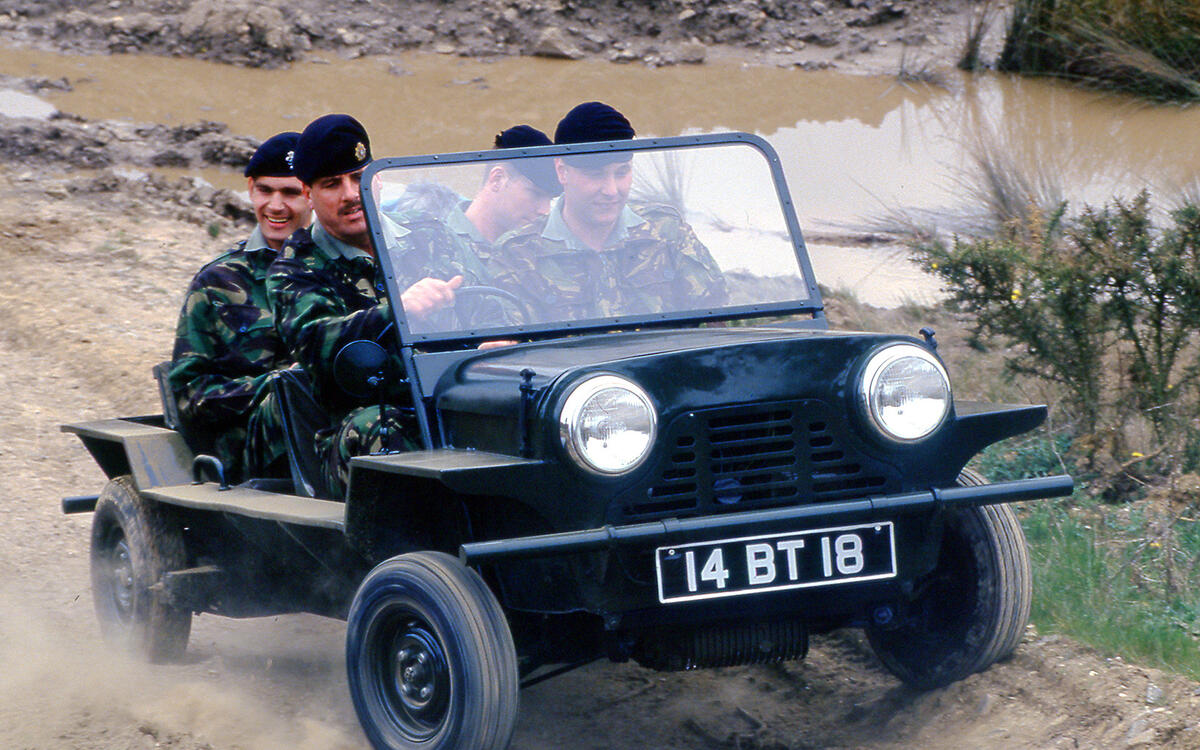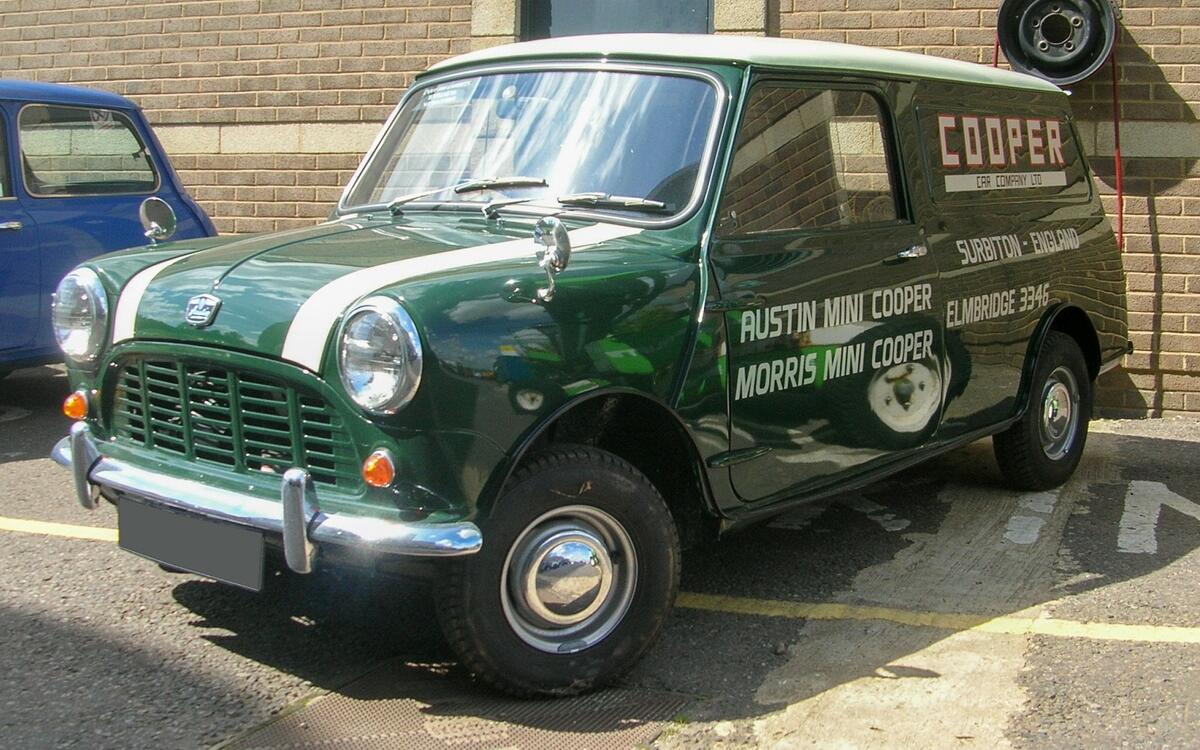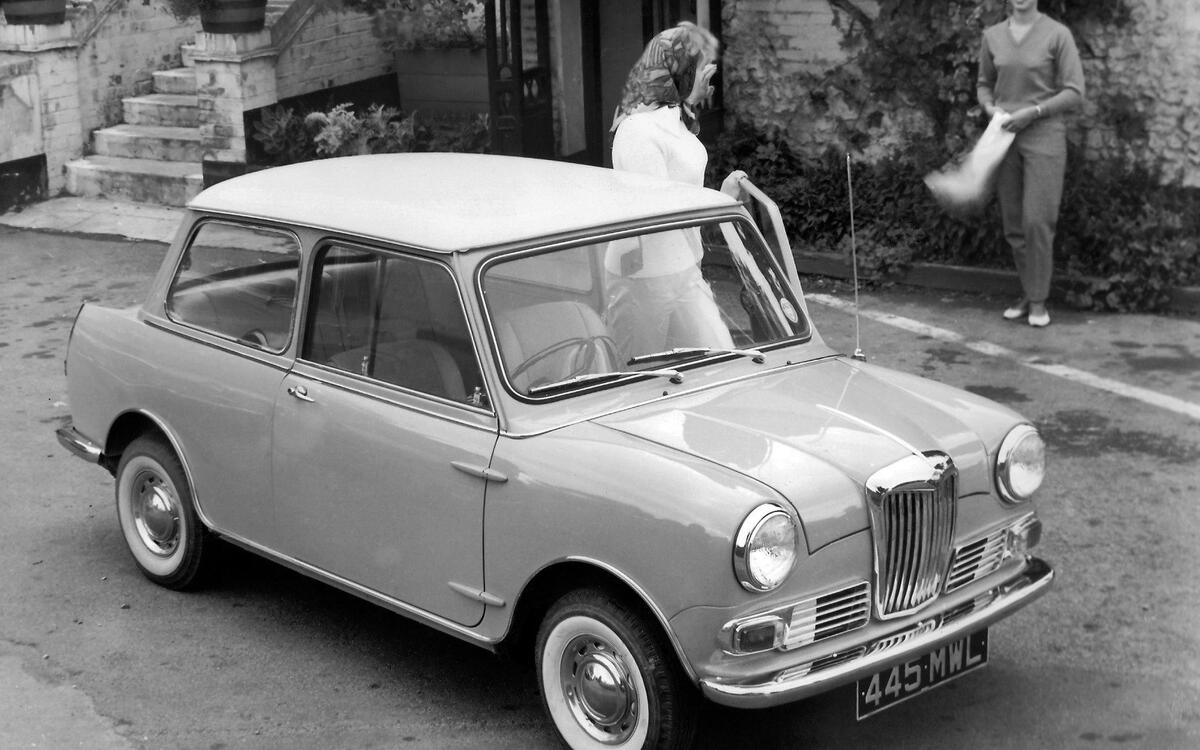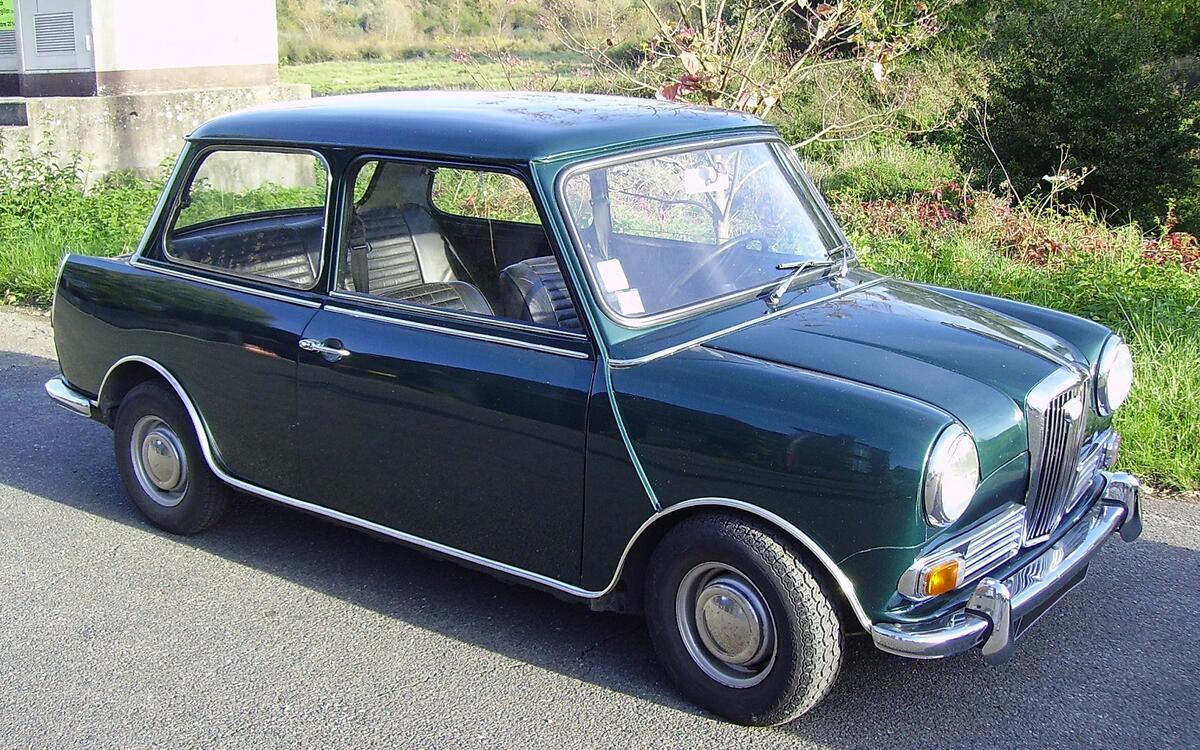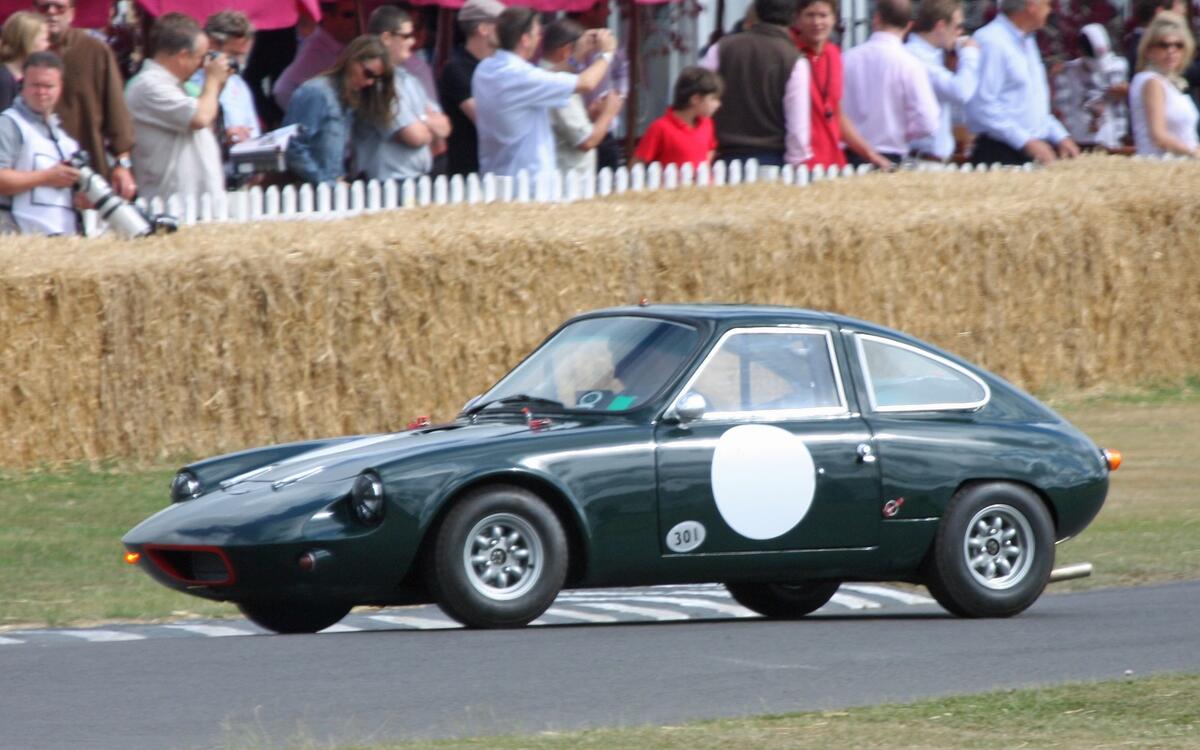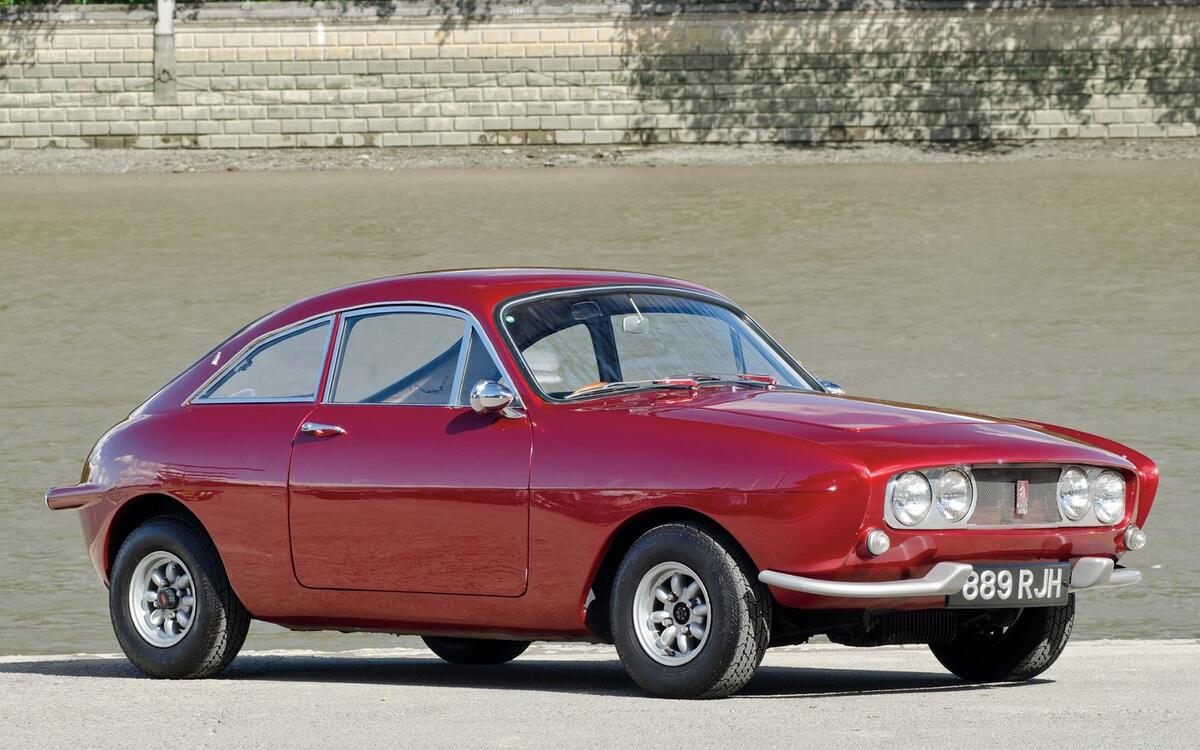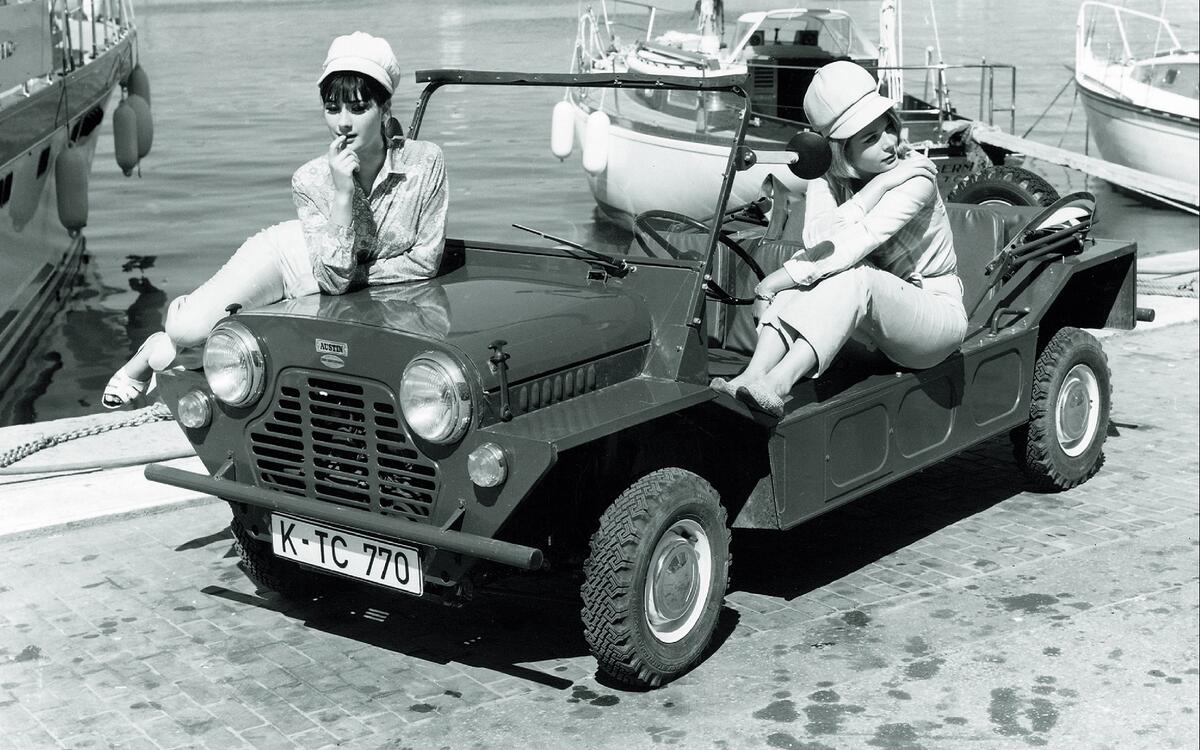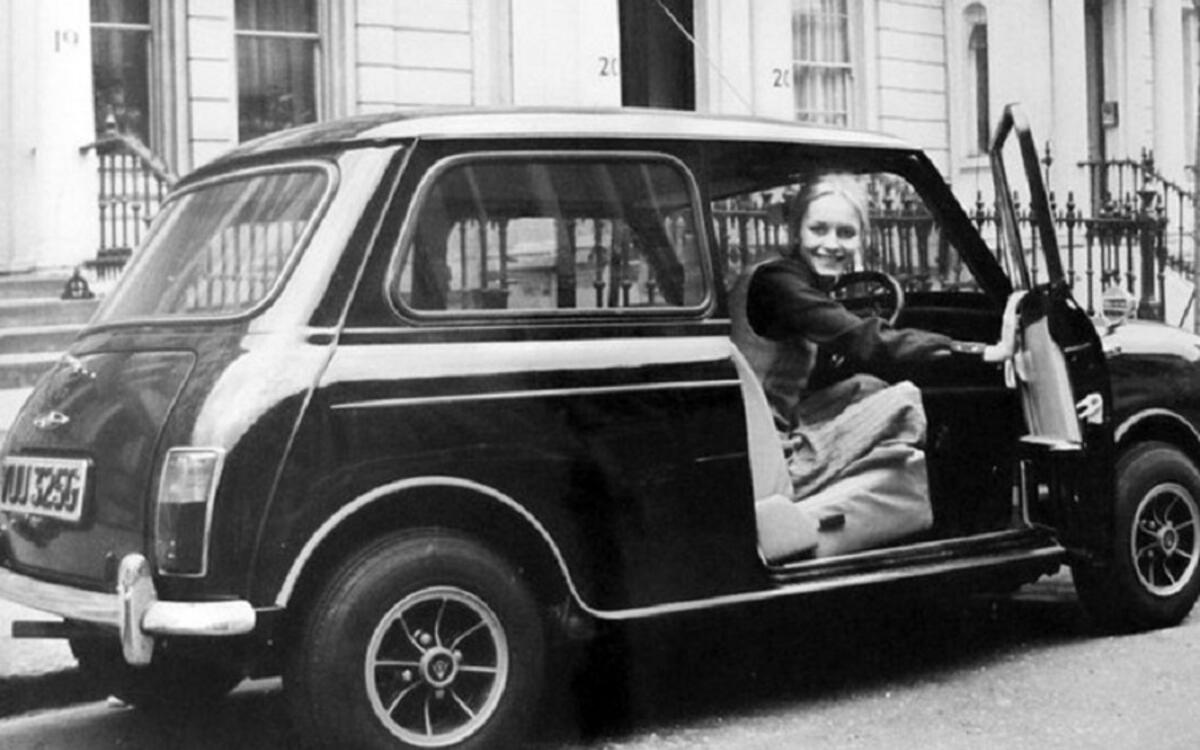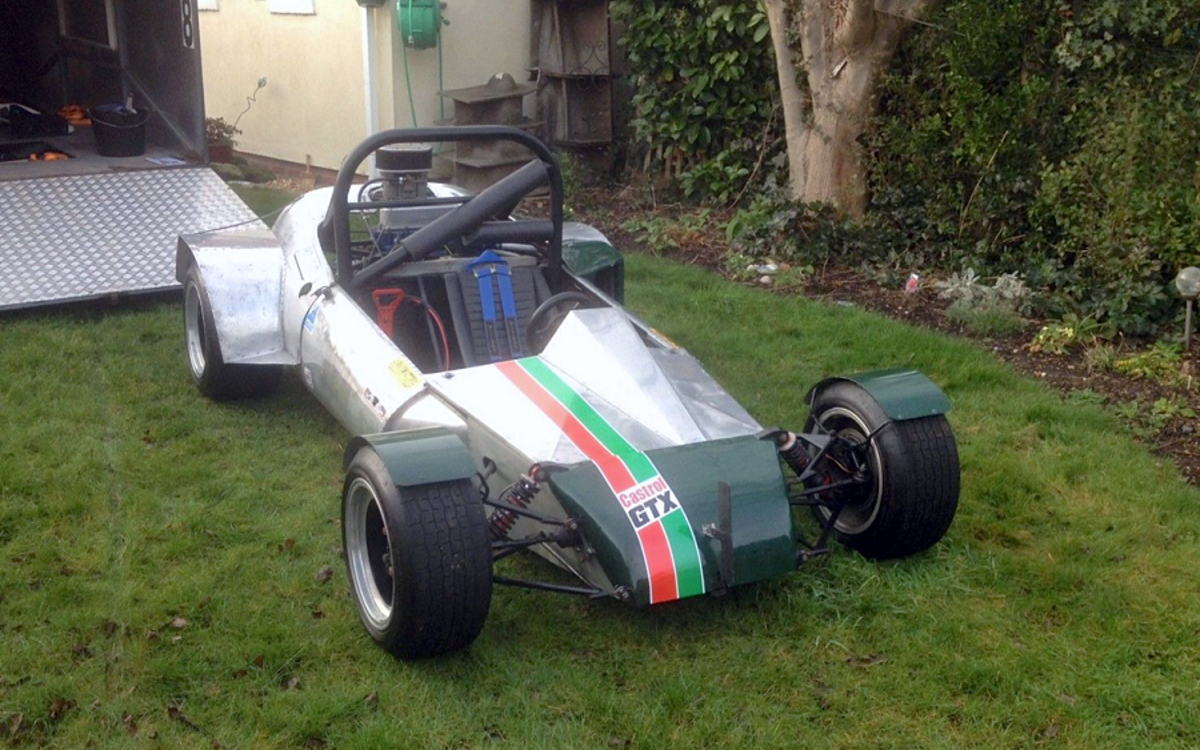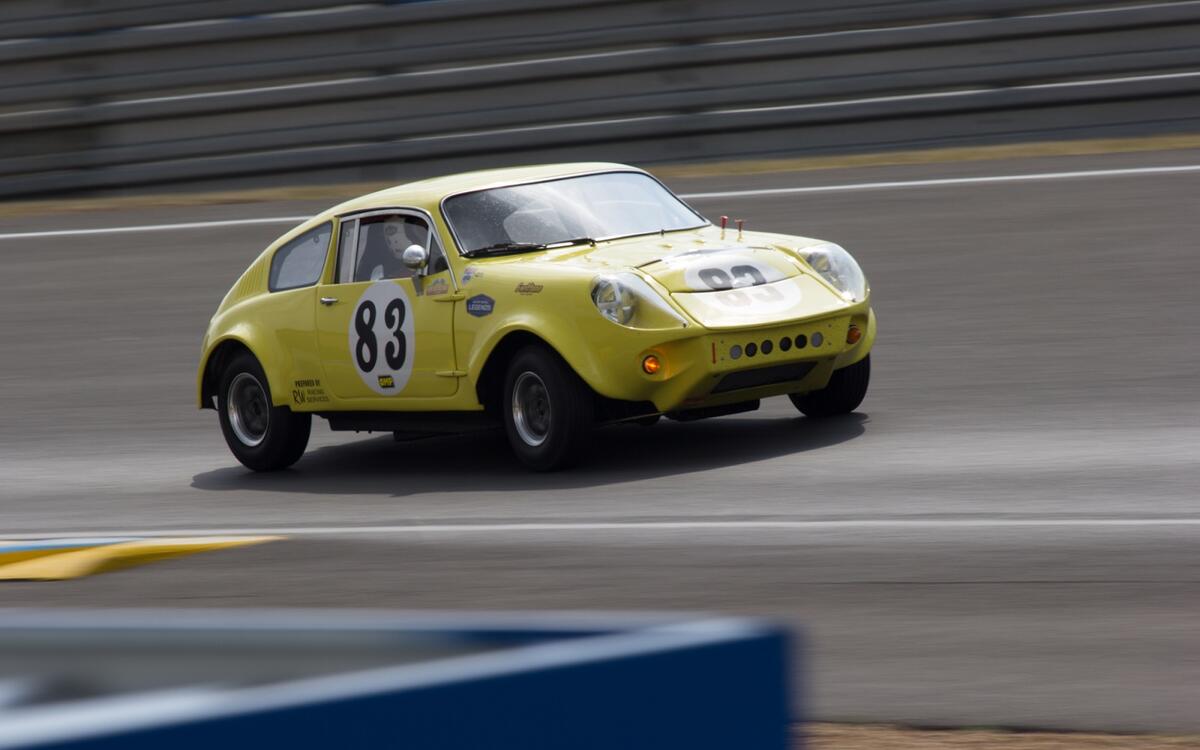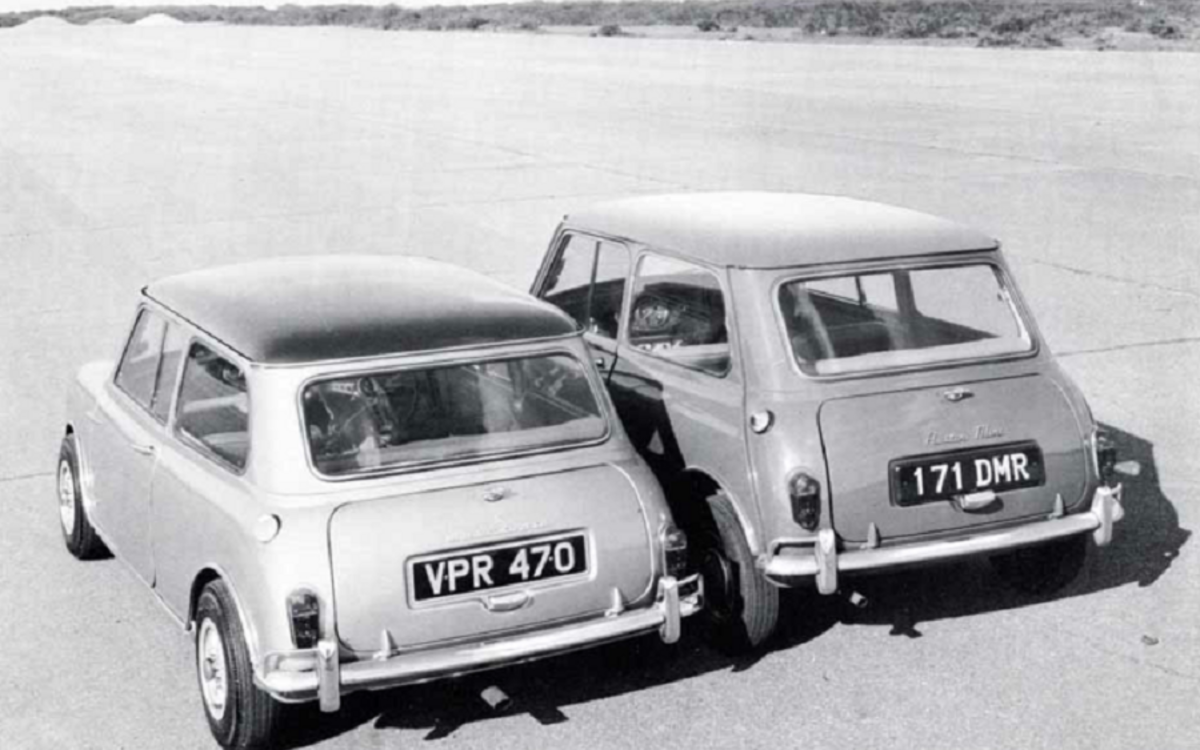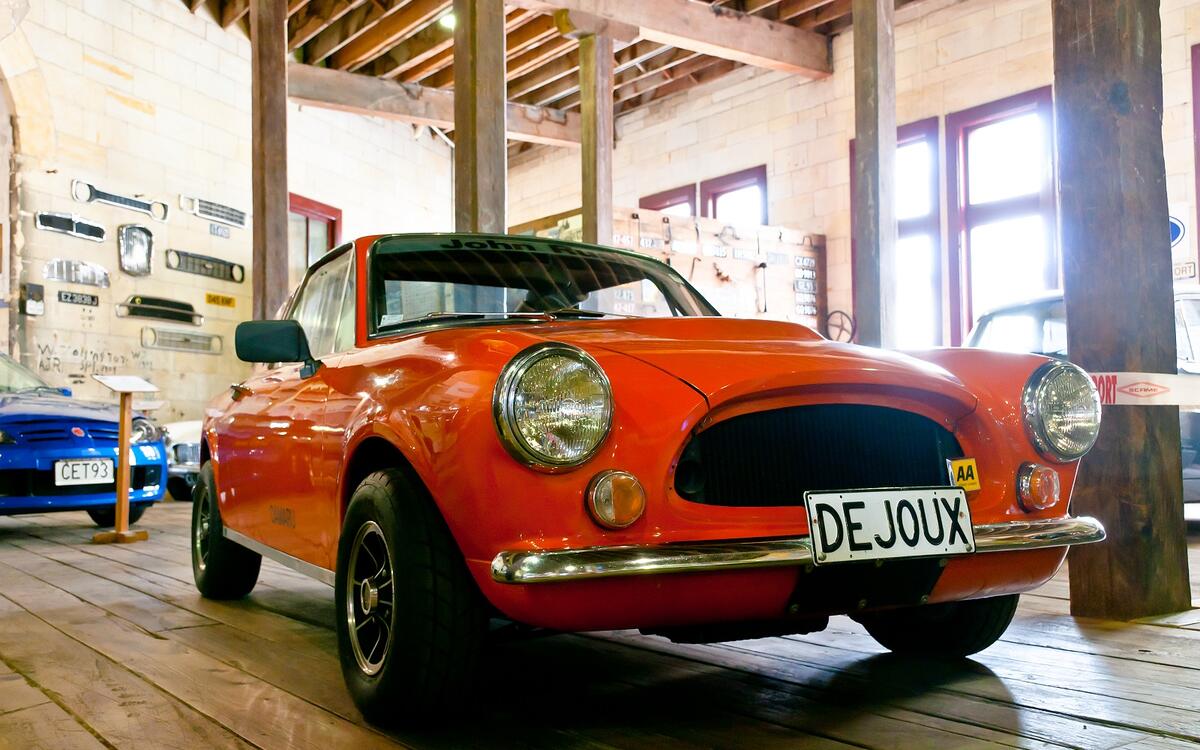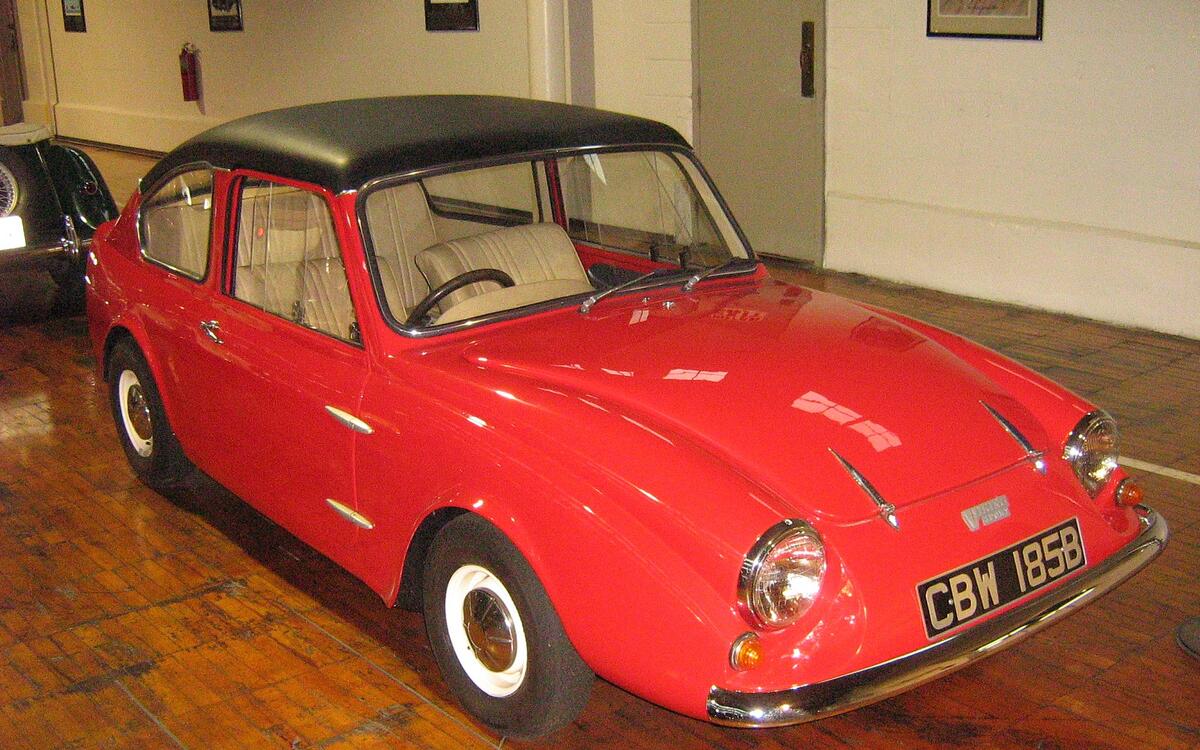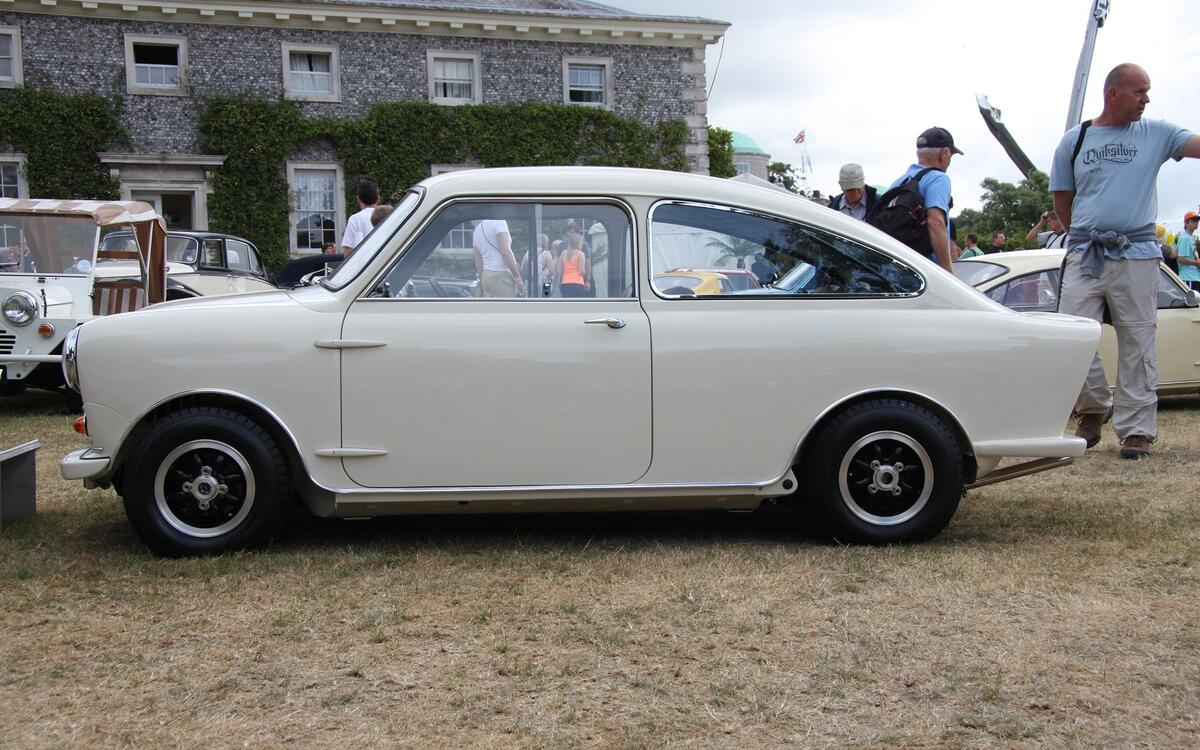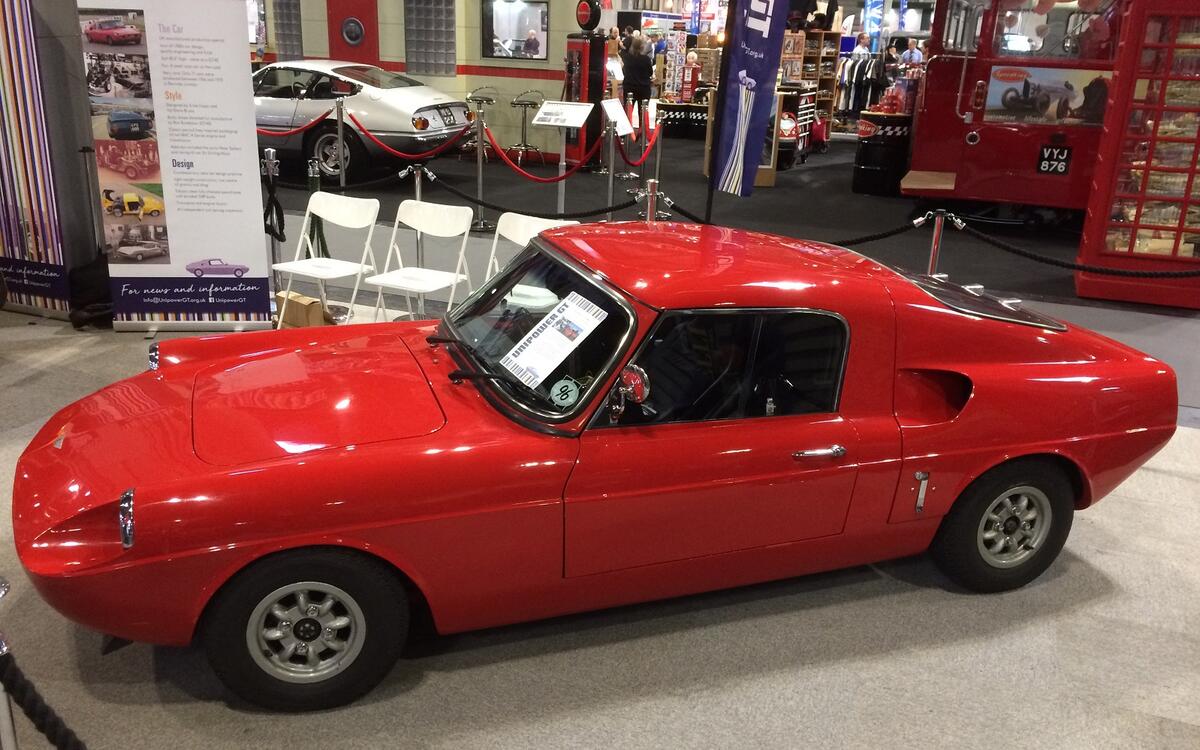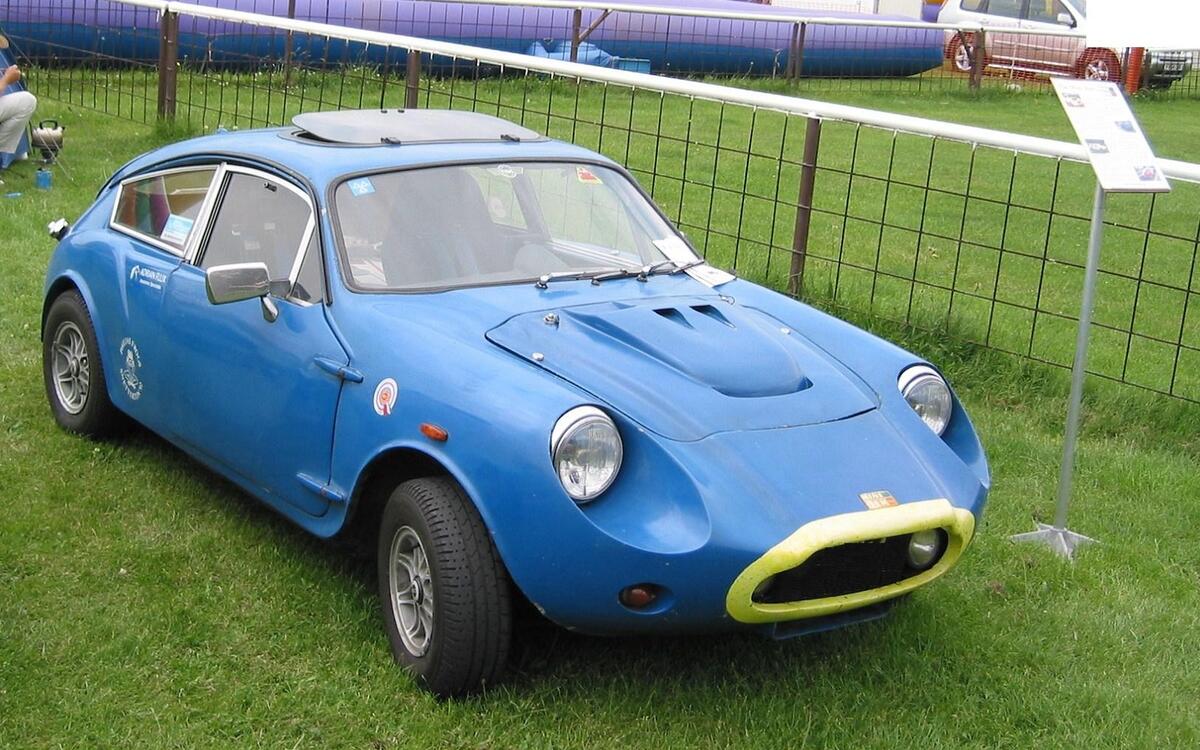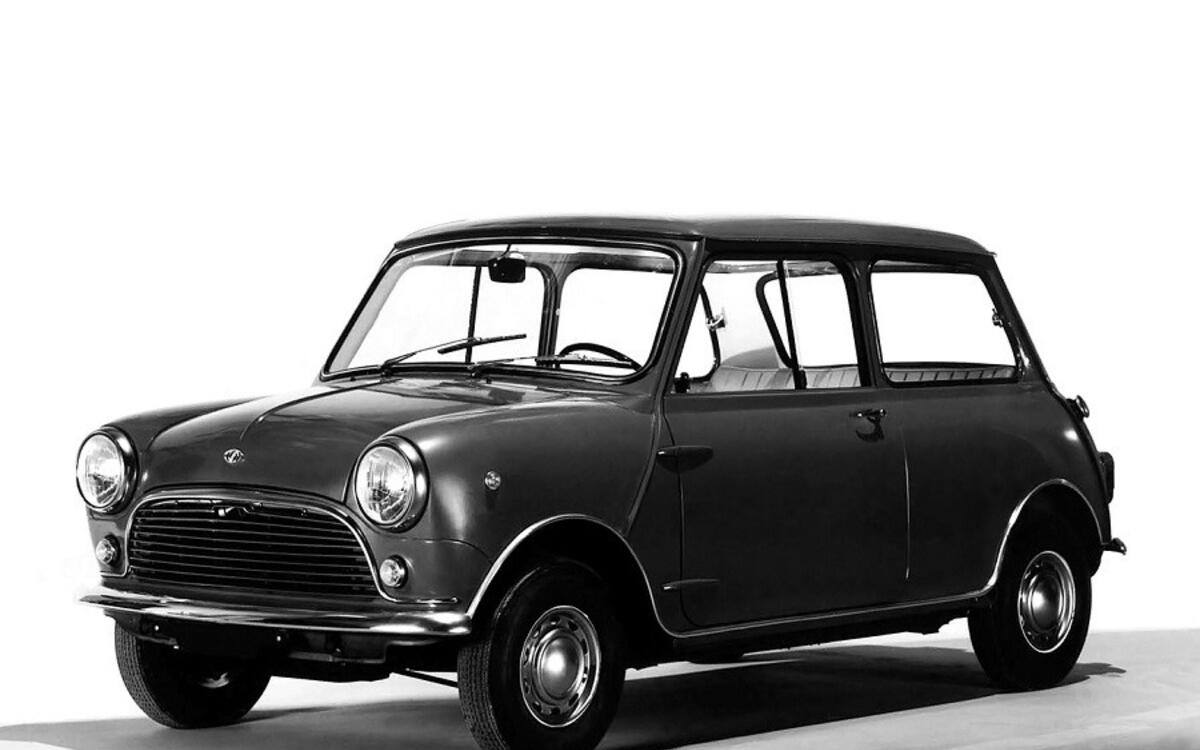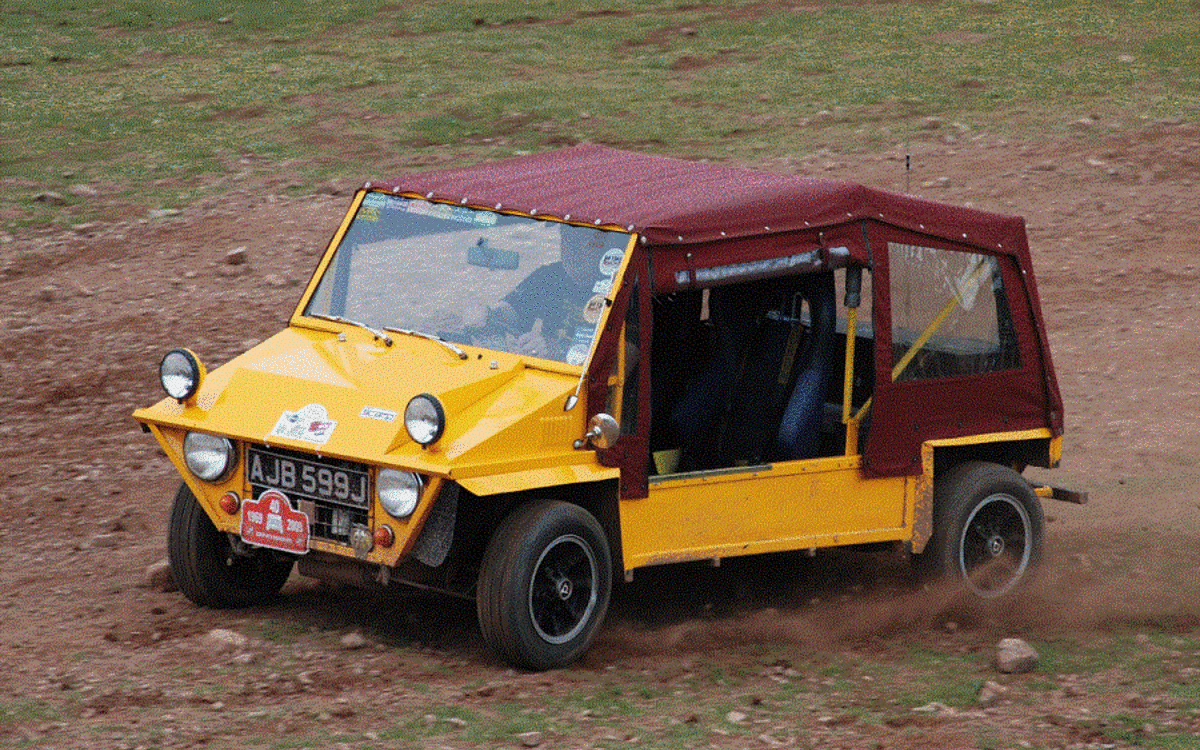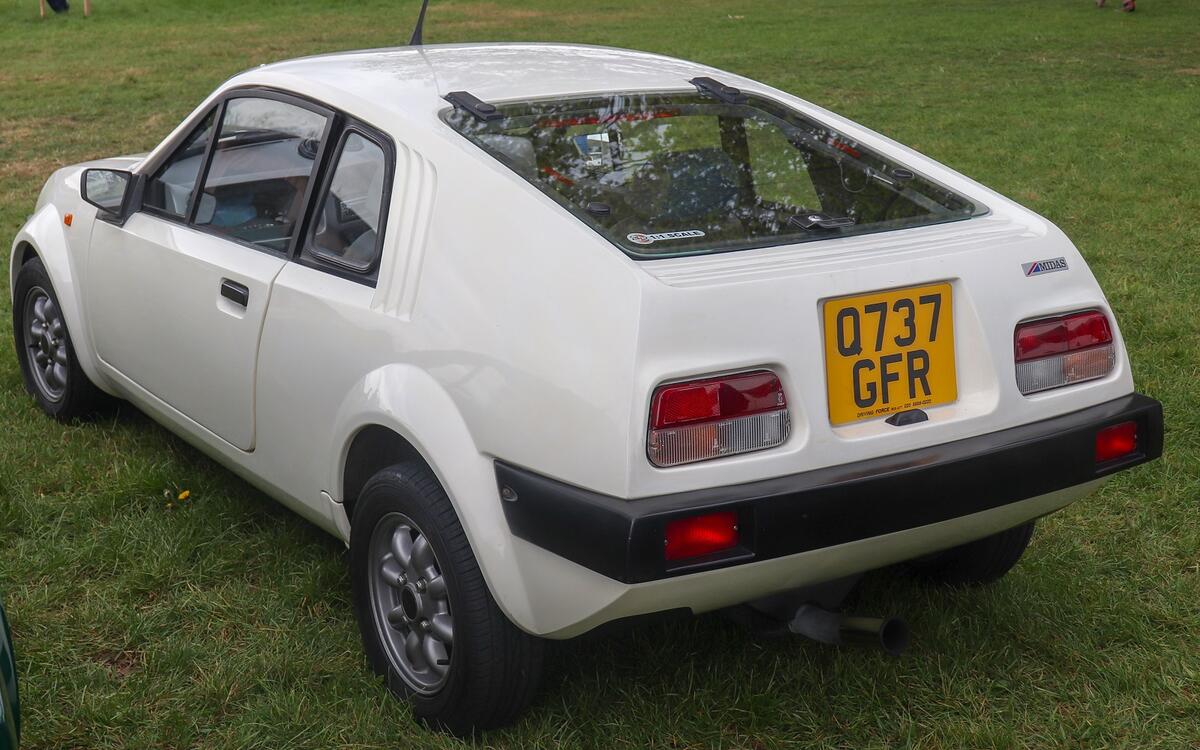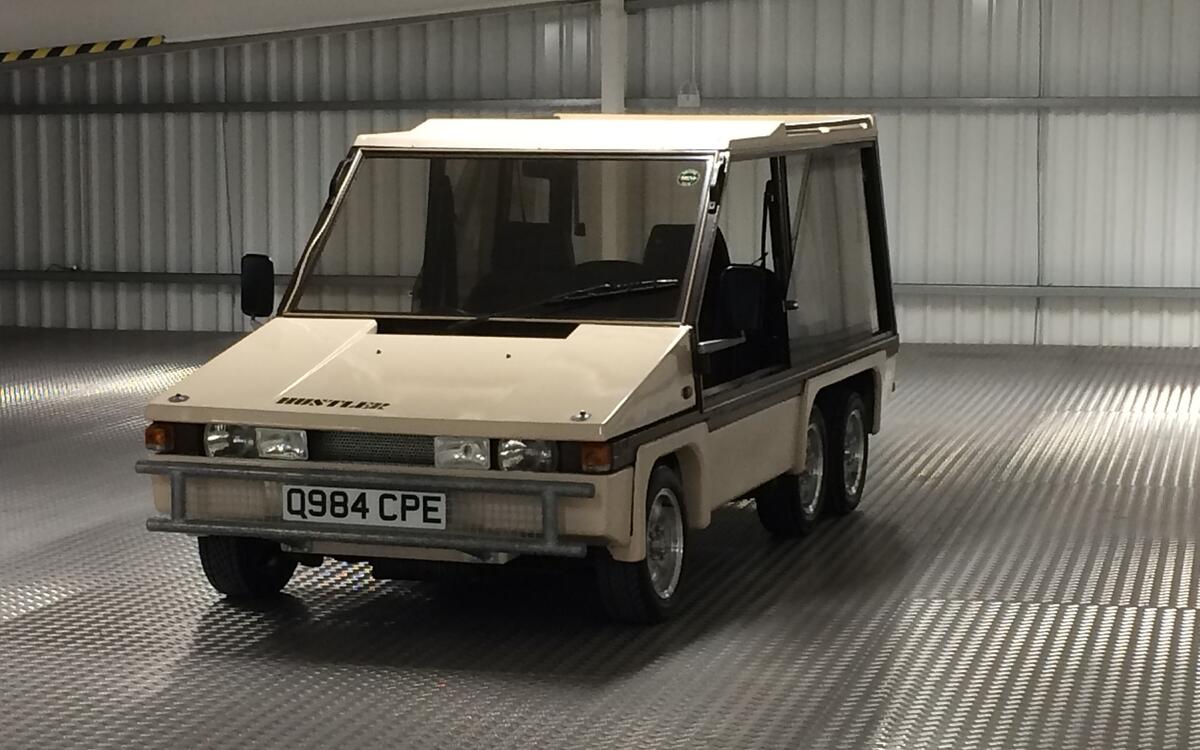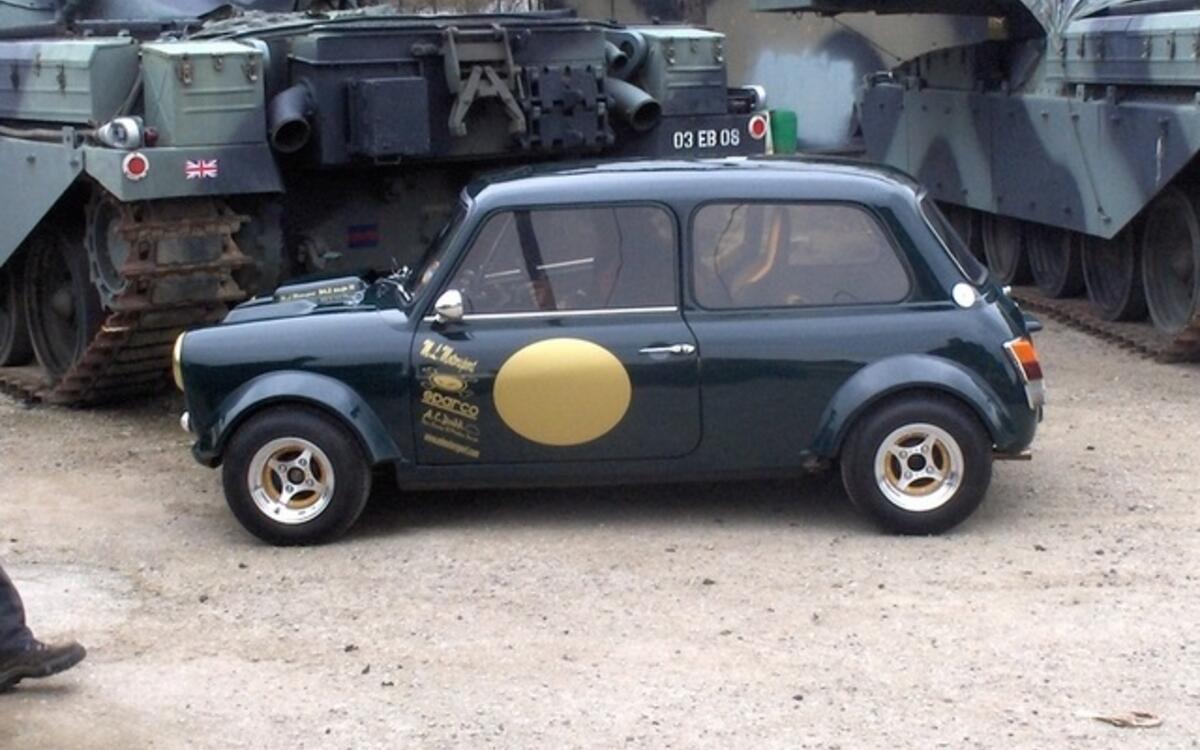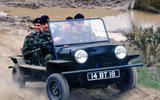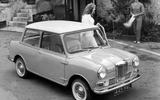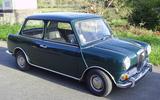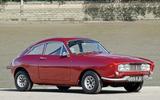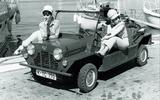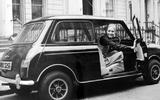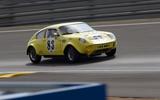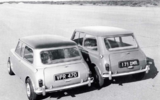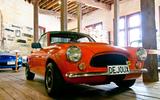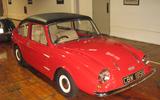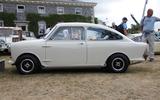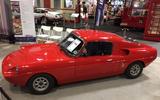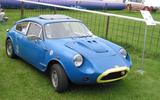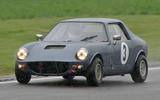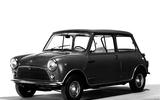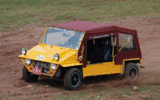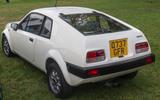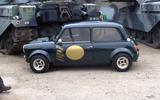 Slide of
Slide of
The original Mini is celebrating its 60th birthday in 2019.
The car attracts a huge classic following, but it has also inspired a whole industry of alternatives based on its components. From utilitarian models to race cars, there isn’t an area of the market the Mini has not infiltrated.
Here’s our pick of the best Mini-based alternatives, ranging from the luxurious to Le Mans contenders:
 Slide of
Slide of
Minivan (1960)
Hot on the heels of the basic Mini, the Minivan was a logical step in the car’s evolution to offer low-cost transport. The van also handily sidestepped sales tax in the UK as it didn’t have rear seats and was a commercial vehicle. That didn’t stop plenty of drivers buying it and installing back seats to end up with a cheap Mini estate car.
The van was built on the four-inch longer Traveller floorpan and many reckoned it had a better ride than the saloon models. It proved an endearingly popular way to carry small amounts of good and lasted in production to 1983 when more than half a million had been built. BMW revisited the Minivan idea with its short-lived Clubvan, launched in 2013.
 Slide of
Slide of
Riley Elf (1961)
Spotting that buyers fancied a Mini with a bit more presence and luxury long before most aftermarket companies did, the Mini’s maker British Motor Corporation (BMC) came up with the Riley Elf. Using the famous badge, they created a car with a distinctive nose, grille and boot.
There was no more power than the standard Mini until the Mk2 arrived in 1962 with the Cooper’s 1.0-litre motor. All Elfs had a tasteful walnut veneer dash, extra gauges and even leather upholstery that helped 30,912 find appreciative homes up to 1969.
 Slide of
Slide of
Wolseley Hornet (1961)
Like the Riley Elf it shared is bustle-booted body with, the Wolseley Hornet was a way of keeping a famous old name alive. The Hornet differed from the Riley in its grille treatment that came with chromed side intakes. It also came with a screenwasher and heater as standard.
The Hornet stayed in production until 1969 and 28,455 were made. That number includes 57 specially made convertibles that were given away as prizes in a competition run by ketchup company HJ Heinz. These cars came with a unique picnic set and are now highly collectable.
 Slide of
Slide of
Deep Sanderson 301 (1962)
Renowned tuner Chris Lawrence was the first to see the potential and ease of mid-mounting the Mini’s engine. He did this for his Deep Sanderson 301 and he competed in the first car at the Nürburgring. Despite crashing that car, he continued and went on to compete at Le Mans in 1963 and ’64, clocking 148mph on the Mulsanne Straight.
The Deep Sanderson, which took its name from Lawrence’s favourite jazz song and his mother’s maiden name, was highly regarded. Only 15 were made, but it went on to influence a whole generation of Mini-based alternatives.
 Slide of
Slide of
Ogle SX1000 (1962)
While most companies building Mini-based cars in the 1960s sought to increase performance, Ogle went in search of luxury. They found it with the SX1000, which was easily one of the best resolved designs of its niche. It used the complete floorpan from the Mini rather than just the subframes and a glassfibre body was bonded onto this.
The compact GT style of the SX1000 caught the attention of the Mini’s maker and BMC supplied brand new components to Ogle. However, 40-year-old company boss David Ogle was killed driving one of his cars in 1962. BMC accordingly withdrew its support, and the SX100 was wound up after 68 cars had been built. The project then moved on to become the less handsome Fletcher GT.
 Slide of
Slide of
Moke (1964)
Given the runaway success of the Mini by 1964, the Moke was a flop. Well, it was for its intended purpose as a low-cost, lightweight military vehicle that designer Alec Issigonis believed would be ideal for carrying four soldiers across rough ground. The problem was the Moke had little more ground clearance than a normal Mini. Not even a twin-engined, four-wheel drive version interested the British armed forces.
However, the Moke did find a cult following among the bright young things of the Swinging Sixties. The Moke also found success as a holiday hire car in places as far flung as Mauritius and Australia where its completely open cabin appealed in the sunshine. Many Mokes were made locally to where they were used and production continued in Portugal up to 1993.
 Slide of
Slide of
Margrave (1964)
The Mini may have been a car to cross social boundaries, but that didn’t stop some owners from wanting a car that was a cut above the rest. This is where specialists like Wood and Pickett came in. Trained by coachbuilder Hooper, which was more used to bodying Rolls-Royces, Wood and Pickett quickly gained a reputation as the go-to company for uprated, upmarket Minis.
Called the Margrave, the company’s posh super-mini could be improved with leather upholstery, wooden dash and door cappings, and a long list of other upgrades. All of this helped the company when it worked with British Leyland to develop the Range Rover In Vogue, which went on to spark the whole luxury SUV market.
 Slide of
Slide of
Terrapin (1965)
Allan Staniforth was a Daily Mail journalist who believed an affordable single-seater race car would be a big success. Rather than produce cars, however, Staniforth and Richard Blackmore wrote the book ‘High Speed, Low Cost’ that detailed how a home builder could make the Terrapin from scratch using a Mini as the base.
The resulting car proved very able in various forms of motorsport and the first finished car was clocked at more than 140mph at its first hillclimb at Harewood, Yorkshire. Terrapins are still being built now using the original book and they remain a force in historic racing.
 Slide of
Slide of
Marcos (1965)
The Mini Marcos emerged out of the original DART built by former airline pilot Dizzy Addicott. The aero influence was clear in the Marcos’ use of a glassfibre monocoque shell that made it light and rigid. A Mini provided the front and rear subframes to make building the car quick and easy, so little wonder more than 1200 Mini Marcos' found homes across five generations of the design.
It’s still possible to buy a brand-new Mini Marcos from Marcos Heritage and there are both road and track variants. This makes the Marcos the most enduring of all the Mini-based alternatives and it’s even exceeded the donor Mini’s production lifespan.
 Slide of
Slide of
MiniSprint (1965)
The idea for the MiniSprint was simple: chop 1.5-inches out of both the body and roof to make a lower, more aerodynamic car. The work was more complicated than it first appeared as the windscreen had to be angled backwards, but the result was worth the effort.
An early customer was famed racer Rob Walker who ordered 50 MiniSprints to sell through his garages. Later cars were chopped by four inches and, along with their dropped suspension, sat 11-inches lower than a standard Mini. By the time production ended in 1967, around 100 MiniSprints had been made and survivors are much prized in classic car circles.
 Slide of
Slide of
de Joux GT (1965)
Despite what the name might lead you to think, the de Joux GT was made in New Zealand. It was the work of Ferris de Joux, who had been an engineer at McLaren before returning to his homeland. The car used a standard Mini chassis, engine and suspension, but the body was glassfibre and bonded over the original bulkhead and sills.
Even though it retained a lot of the Mini underneath, the de Joux GT has very pretty, distinctive styling. The fastback shape dictated it was really a two-seater, though there was room for a third occupant in the rear. When production ended in 1970, 20 GTs had been sold in kit form.
 Slide of
Slide of
Peel Viking Sport GT (1966)
Peel is the Isle of Man company famed for its tiny P50, but the Viking Sport GT was a more serious effort to offer a fastback sports car. The company achieved this, but in its bid to re-use as much from the original Mini as possible, the styling struggled to accommodate the tall Mini engine.
Buyers were less enthused and Peel only sold a handful of the Viking Sport GT before it moved the car on to new owner Viking Performance. When the dust settled on the car in 1967, it’s thought 24 Vikings have been produced.
 Slide of
Slide of
Broadspeed GT (1966)
The Broadspeed name is famous among Mini fans for its go-faster components, but the company also made its own car in the GT. It was created by lopping off the rear bodywork of a Mini saloon and blending in a glassfibre fastback section. A tuned engine was used and the GT was praised in contemporary press reviews.
With Broadspeed’s background, it wasn’t long before the GT was on the race track. It showed promise against its rivals and one GT was clocked at 140mph in the Netherlands with a 1360cc engine. However, company boss Ralph Broad pulled the plug in 1968 after 29 GTs had been built.
 Slide of
Slide of
Unipower GT (1966)
Often regarded as a Ford GT40 in miniature, the Unipower GT is also one of the best designed and made cars to use the Mini as its starting point. Dreamed up by Ernie Unger and Val Dare-Bryan, the low-slung mid-engined car made its debut in 1966 and was an instant hit.
However, the car was not quite production-ready and by 1968 only 60 cars had been produced. A Mk2 version was made by Piers Weld-Forrester, but only 15 of these cars made it out of the factory gates. In the end, the quality of the Unipower GT’s design was let down by flawed manufacturing.
 Slide of
Slide of
Mini Jem (1967)
The Mini Jem looks very similar to the Marcos because both derived from the DART built by Dizzy Addicott. Using the same method of fitting the Mini’s subframes to a glassfibre body as the Marcos, the Jem was a little cheaper to buy. However, that didn’t translate into greater sales and fewer than 350 Mini Jems were produced across three generations up to 1977.
Early Mini Jem models were hampered by poor build quality, but the Mk2 model under the stewardship of Robin Statham was a much improved car. Statham also raced the car and his personal machine had a tuned 1293cc Cooper S engine and was capable of 130mph.
 Slide of
Slide of
Cox GTM (1967)
Known as the Cox Grand Touring Mini, this was quickly shorted to GTM. Unlike most other Mini-based alternatives, the Cox mounted the engine behind the cabin, making it a mid-engined car before most supercar makers thought of this. Strong and light, the Cox was good for 0-60mph in 6.4 seconds and 115mph with a Cooper S engine.
Later in its life, the GTM was produced by Paddy Fitch and Peter Beck who developed it into a superb compact sports car. In total, more than 700 GTMs were made and it went on to inspire the Rossa and Libra models that updated the original Grand Touring Mini theme.
 Slide of
Slide of
Innocenti Mini (1968)
The Innocenti Mini Minor is one of the few Innocentis people outside of Italy will have heard of. Built under licence, this Italian-made car was offered in saloon and popular estate forms. The wagon could be ordered with Cooper-spec engines, which made it a very rapid way to get to and from the market.
Innocenti made 450,000 of its Mini Minor and then a further 220,000 of the Mini 90 that was a much sharper-edged rebody of the original car. Compared to the Mini Clubman makeover, Innocenti’s was far more thorough and on-trend for the period next to the likes of the Renault 5 and Volkswagen Polo. Our used car guru James Ruppert is a current proud owner.
 Slide of
Slide of
Scamp (1969)
If the British Motor Corporation lost faith in the Moke concept, the specialist car industry certainly didn’t and Robert Mandry built his Scamp very much in the same mould. Using a rugged steel chassis with all of the mechanical bits of a Mini bolted in, the Scamp proved to be a big hit.
Over three generations, the Scamp has retained its set square styling and near-indestructible build. There have also been six-wheeled versions, racing models, off-roaders and even camper conversions. The Scamp Motor Company will also still sell you a kit to build a brand-new version of any Mini-based model.
 Slide of
Slide of
Midas (1978)
If ever a kit car maker challenged the mainstream auto industry, it was Midas. Harold Dermott was a skilled engineer and bought the Mini Marcos project that he redeveloped with styling help from Richard Oakes. The Mk1 gave way to the Mk2 when none other than McLaren F1 designer Gordon Murray restyled the Midas and gave the car his seal of approval, though Murray’s own car used a mid-mounted Alfa Romeo motor.
Later in its life, the Midas morphed into the Gold and was the first all-fibreglass monocoque to pass then current crashworthiness tests. Unfortunately, a factory fire put the company out of business in 1989 and, despite various attempts, the Midas name never attained its former success.
 Slide of
Slide of
Hustler (1979)
William Towns didn’t just design a single Mini-based car, he came up with a whole range that went from the basic 4 all the way to the six-wheelers and an amphibious model. All featured a simple and rugged steel tube chassis that also doubled as the runners for sliding glass doors.
The Hustler range showed off Town’s love of straight edges in styling and he was also responsible for the Aston Martin Lagonda of 1976. Unlike the Lagonda, the Hustler range was affordable and available in kit form to build at home.
 Slide of
Slide of
Minus (1982)
The Minus might look like a normal Mini, but it was a clever recreation, the MiniSprint. It addressed the one issue all normal Minis suffer from: rust. With a glassfibre shell, all the mechanical bits of a Mini simply bolted in and, hey presto, you had a low-roofed and swift Mini.
Part of the appeal of the Minus was you could swap over all of the interior from a Mini and it was easy to upgrade. It also weighed less than the original car, so performance was boosted even with a standard engine under the bonnet.
As the peoples' car of Britain celebrates it's sixth decade, we take a look at the best Mini-inspired offshoots
Advertisement

